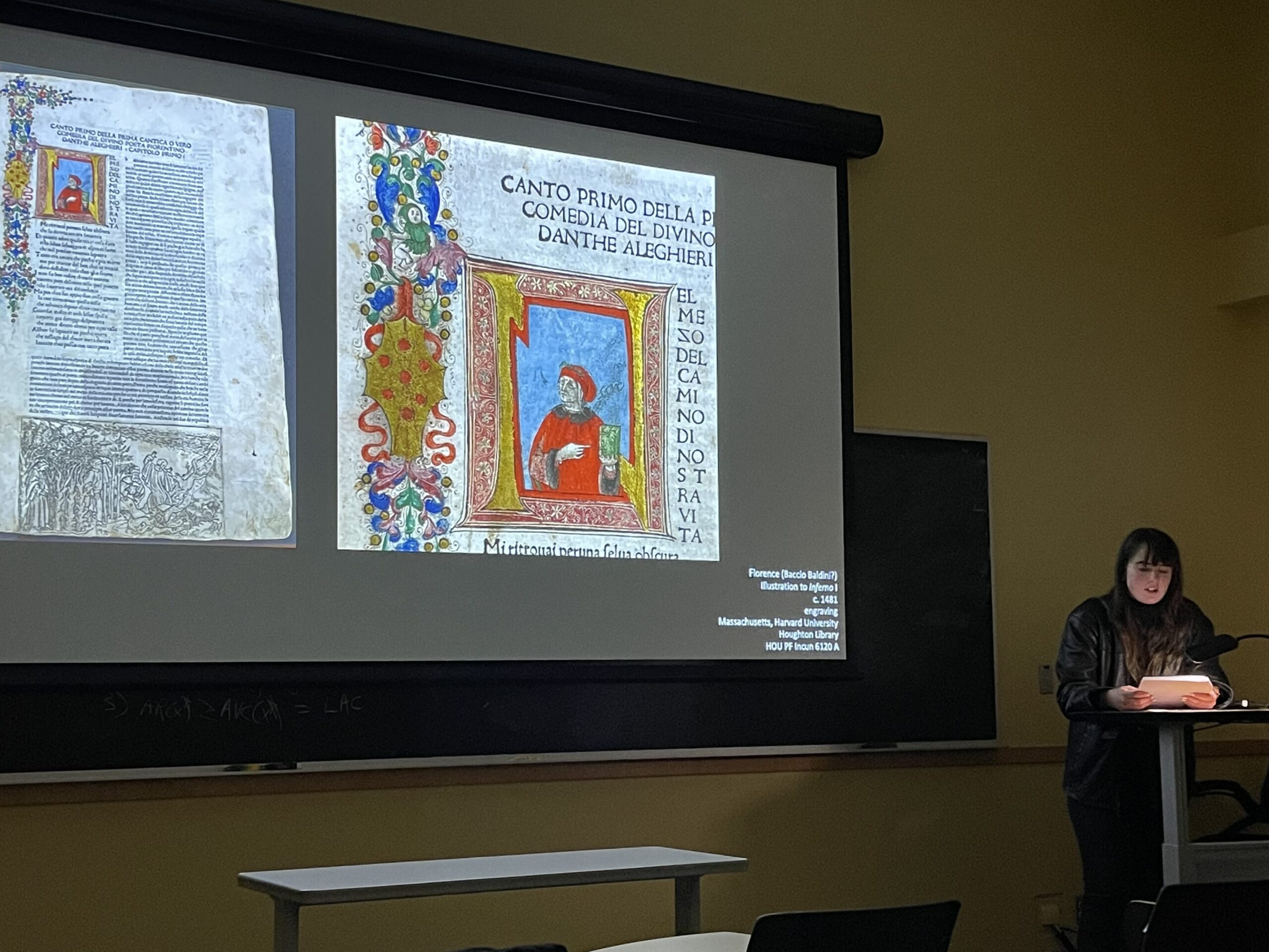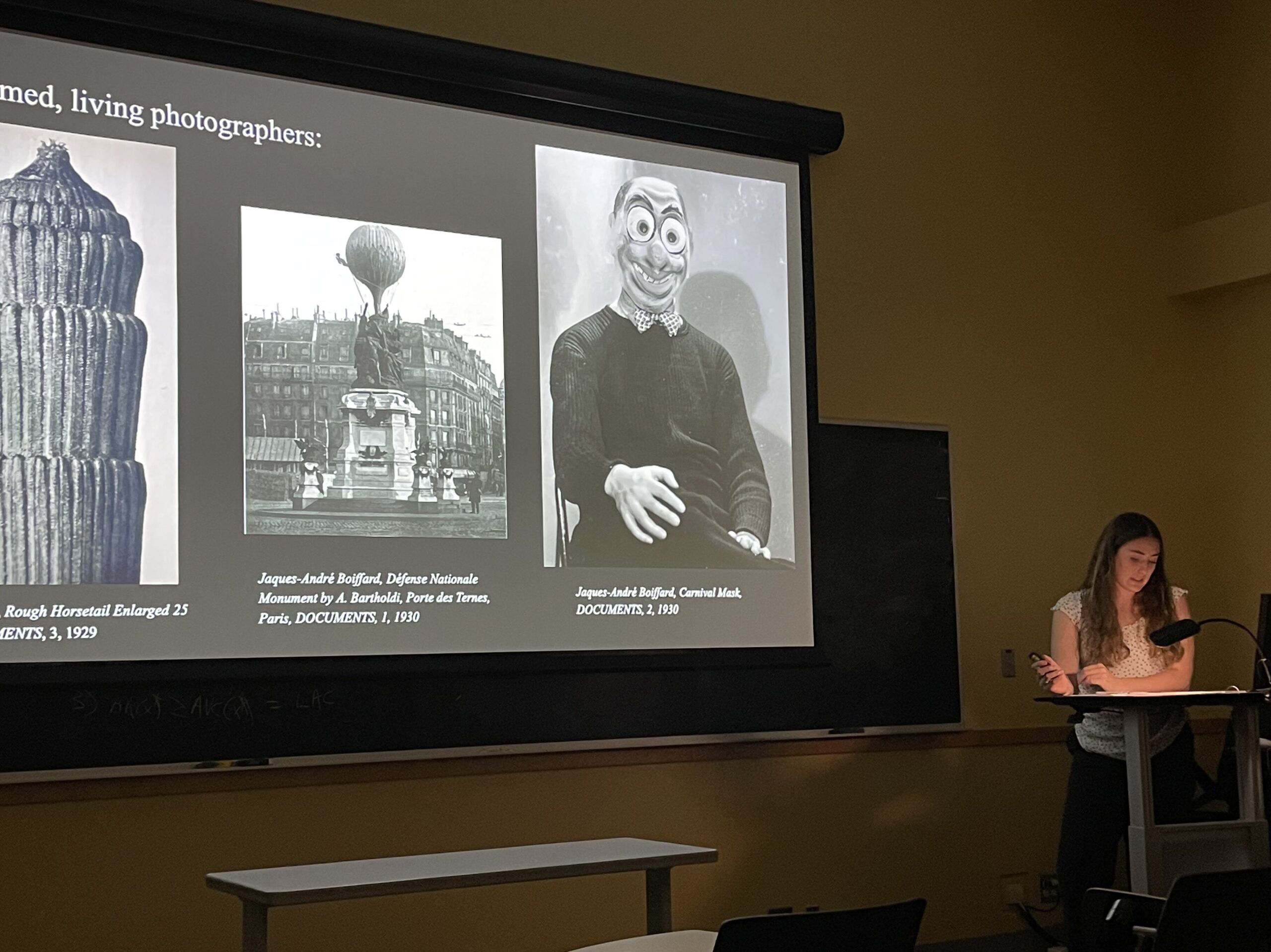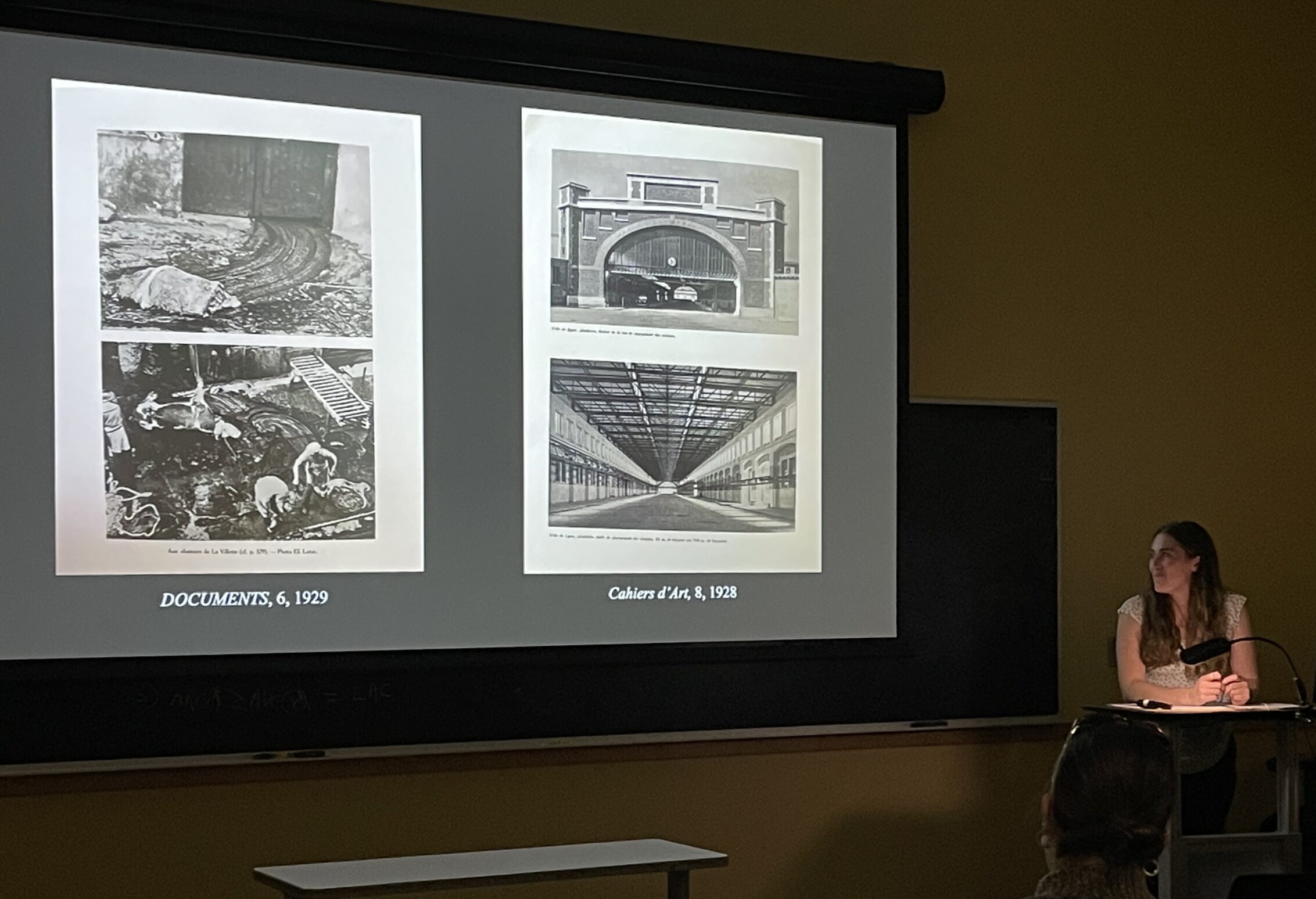Seniors seeking honors in Art History recently participated in the Honors Theses Fall Colloquium. This was an important opportunity for them to share their early project research and receive constructive feedback and guidance from their peers and faculty. Mark your calendars for the next Honors Theses Spring Colloquium! February 23rd 2023
Gabby Farina ’23
“Memory, Monument, and Gender: Preserving the Female Body Through Architecture in Al-Andalus“

The female body has both physically and metaphorically been used as a marker of space in Islamic Spain, creating a delineation of female space within monuments such as the Alhambra, the Royal Chapel of Granada, and Madinat al-Zahra. By centering architectural spaces concerned with the visibility of gender in al-Andalus, this thesis investigates the aesthetic of the feminine, considering how women were often seen as the source of inspiration for monuments, but generally made to be passive subjects in the building and construction process. It acts as an entry point to study larger questions of the development of the Gothic style in Spain, religious dialogues between Muslim and Christian cultures, and the agency of medieval female makers and patrons in al-Andalus. As María Elena Díez Jorge states, there is “a historiographical void when it comes to analyzing the architecture of al-Andalus from a gender perspective;” this project aims to fill part of this gap, rethinking gender-based approaches to medieval art through an exploration of how the aesthetic of the beautiful is connected to gendered space.
Sarah Hale ’23
“The Engravings of Dante’s Commedia in Wesleyan’s 1481 Incunable”

This project centers around Olin Library’s incunable containing Dante Alighieri’s Commedia and the first edition of Cristoforo Landino’s Comento sopra la Commedia printed in Florence in 1481 by Niccolò di Lorenzo della Magna and financed by Bernardo degli Alberti. From its inception, the 1481 incunable was fully steeped in the Florentine humanist tradition and intended to increase esteem for Dante as one of Florence’s greatest vernacular authors. Florence was Dante’s own city, yet the city’s rather critical representation in the poem and the poem’s sheer magnitude meant that this was the first edition to be printed in Florence, though, by 1481, printing had been present in the city for over a decade. Out of the intended 100 engravings, the Wesleyan incunable contains two original engravings, eleven-line drawings, and two later engravings. This unique assortment of illustrations highlights the difficulties of combining two separate printing processes: the relief printing of the type and the intaglio printing of the illustrations. This project examines the complicated relationships that developed between authors, artists, and printers as they worked together to use new technologies to foreground Florentine greatness and reclaim Dante Alighieri, the city’s most renowned exile.
Mim Pomerantz
“Surrealism, Ethnography, and Photography”

Following World War I, Surrealist artists rejected the rationalism and empiricism they saw as leading to this violence. One strategy they employed to combat these ways of thinking was a turn toward cultures they viewed as “primitive,” specifically those in Africa, Oceana, and the Americas. Methodologies and collections of objects from anthropology and other human sciences were often the entry point for Surrealist artists’ interest in non-Western cultures. Important contradictions emerge between the anti-colonial politics of Surrealism and its engagement with ethnography. Photography was important as a tool of colonial ethnography and a mediating force between Surrealist sensibilities and the Western study of African and Oceanic people and objects. Anti-colonialism was a ubiquitously espoused political stance among the Surrealists. Even so, their artistic output around this issue ranged from critiques of ethnography and photography as tools of colonialism to the wholesale commodification of African material culture. This project examines the relationship between Surrealism, ethnography, and photography. Three case studies demonstrate the range of ways issues of ethnography and “primitive” art were engaged with through photography: appropriated ethnographic photographs published in the surrealist periodicals Documents (September 1932); Man Ray’s 1937 Mode au Congo series; and Belgian Surrealist Raoul Ubac’s Penthésilée photomontages (1937-39).
For more information on Honors in Art History, visit the ARHA Website: https://www.wesleyan.edu/art/arthist/honors_in_art_history/index.html


